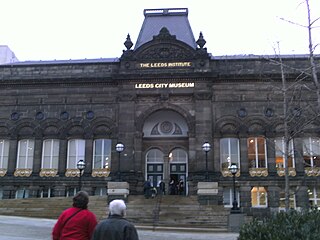
Mechanics' institutes, also known as mechanics' institutions, sometimes simply known as institutes, and also called schools of arts, were educational establishments originally formed to provide adult education, particularly in technical subjects, to working men in Victorian-era Britain and its colonies. They were often funded by local industrialists on the grounds that they would ultimately benefit from having more knowledgeable and skilled employees. The mechanics' institutes often included libraries for the adult working class, and were said to provide them with an alternative pastime to gambling and drinking in pubs.

Mechanics' Institute is a historic membership library, cultural event center, and chess club housed at 57 Post Street, San Francisco, California. It was founded in 1854 as a mechanics' institute, an educational and cultural institution to serve the vocational needs of out-of-work gold miners. Today the Institute serves readers, writers, downtown employees, students, film lovers, chess players, and others in search of learning and a community for the exchange of ideas.

Brisbane Central Technical College is a heritage-listed technical college at 2 George Street, Brisbane City, City of Brisbane, Queensland, Australia. It was built from 1911 to 1956. It became the Queensland Institute of Technology (QIT) in 1965, and then in 1987 that became the Queensland University of Technology. It was added to the Queensland Heritage Register on 27 August 1999.
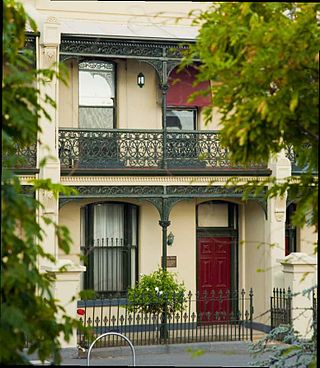
Graduate House is a residential college and an academic and professional development meeting and gathering place in Melbourne, Victoria, Australia.
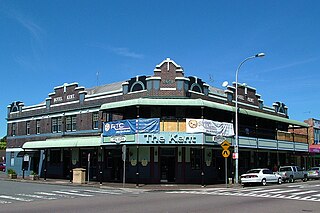
Hamilton is a suburb of Newcastle, New South Wales, Australia, located 4 kilometres (2.5 mi) from Newcastle's central business district. The main commercial centre is located around Beaumont Street and boasts a vibrant multicultural atmosphere providing an array of restaurants, retail, fashion and commercial outlets along with day-to-day services such as pharmacies, banks, florists, hairdressers, fruit shops and delicatessens.

The St Thomas More Roman Catholic Church is in Market Street, Bradford-on-Avon, Wiltshire, England. The structure, which originally served as Bradford-on-Avon Town Hall, was designed by Thomas Fuller and is a Grade II listed building.

The Carnegie Library is in Egerton Street, Runcorn, Cheshire, England. It is recorded in the National Heritage List for England as a designated Grade II listed building and "possesses special architectural and historic interest within a national context". It was built in 1906 as an extension to Waterloo House and the existing library with a grant from Andrew Carnegie, and closed in 2012.
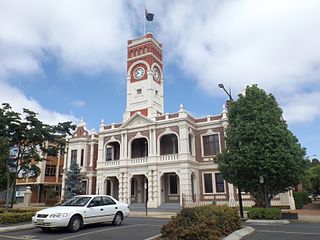
Toowoomba City Hall is a heritage-listed town hall at 541 Ruthven Street, Toowoomba, Toowoomba Region, Queensland, Australia. It was designed by Willoughby Powell and built in 1900 by Alexander Mayne. It is also known as Toowoomba Town Hall. It was added to the Queensland Heritage Register on 21 October 1992.

The Mechanics' Institute, located at 103 Princess Street, Manchester, England, is notable as the building in which three significant British institutions were founded: the Trades Union Congress (TUC), the Co-operative Insurance Society (CIS) and the University of Manchester Institute of Science and Technology (UMIST). In the 1960s it was occupied by the Manchester College of Commerce. It has been a Grade II* listed building since 10 May 1972.

The Sydney Mechanics' School of Arts (SMSA) is the longest running School of Arts and the oldest continuous lending library in Australia.

Brisbane School of Arts is a heritage-listed school of arts at 166 Ann Street, Brisbane City, City of Brisbane, Queensland, Australia. It was built from 1865 to 1985. It is also known as former Servants Home. It was added to the Queensland Heritage Register on 21 October 1992.
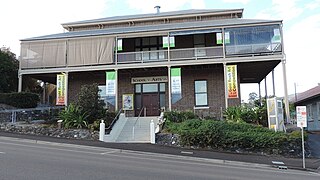
Gympie School of Arts is a heritage-listed school of arts at 39 Nash Street, Gympie, Gympie Region, Queensland, Australia. It was designed by architect Hugo William Du Rietz and was built from 1904 to 1905. It was added to the Queensland Heritage Register on 23 April 1999. It is now home to the Gympie Regional Gallery.

Maryborough School of Arts is a heritage-listed School of Arts building at 427 Kent Street, Maryborough, Fraser Coast Region, Queensland, Australia. It was designed by John Harry Grainger and built from 1887 to 1888 by Jacob & John Rooney. It is also known as Museum and Technical College and Recreation Club. It was added to the Queensland Heritage Register on 21 October 1992.

Bundaberg School of Arts is a heritage-listed former school of arts and now community centre at 184 Bourbong Street, Bundaberg Central, Bundaberg, Bundaberg Region, Queensland, Australia. It was designed by Anton Hettrich and built from 1888 to 1889. It was added to the Queensland Heritage Register on 21 October 1992.

Rockhampton School of Arts is a heritage-listed former school of arts at 230 Bolsover Street, Rockhampton City, Rockhampton, Rockhampton Region, Queensland, Australia. It was designed by William (Walter) Cherry built in 1894 by Walter Adam Lawson. It is also known as Rockhampton Regional Library and Rockhampton Municipal Theatre. It was added to the Queensland Heritage Register on 21 October 1992.

Mackay Technical College is a heritage-listed former technical college at Alfred Street, Mackay, Mackay Region, Queensland, Australia. It was designed by Thomas Pye and built from 1911 to 1912. It is also known as Block E Mackay TAFE. It was added to the Queensland Heritage Register on 27 October 2000.
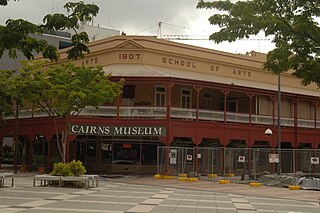
Cairns School of Arts is a heritage-listed former school of arts and now the Cairns Museum at 93–105 Lake Street, Cairns City, Cairns, Cairns Region, Queensland, Australia. It was designed by Tunbridge, Tunbridge & Lynch and built from 1907 to 1941 by Hanson & Sons. It was added to the Queensland Heritage Register on 21 October 1992.

Charters Towers School of Mines is a heritage-listed school of mines at 24–26 Hodgkinson Street, Charters Towers City, Charters Towers, Charters Towers Region, Queensland, Australia. It was added to the Queensland Heritage Register on 21 October 1992.

The Sydney School of Arts building, now the Arthouse Hotel, is a heritage-listed meeting place, restaurant and bar, and former mechanics' institute, located at 275–277a Pitt Street in the Sydney central business district in the City of Sydney local government area of New South Wales, Australia. It was designed by John Verge and built from 1830 to 1861. It is also known as Sydney Mechanics' School of Arts. It was added to the New South Wales State Heritage Register on 2 April 1999.

Otley Civic Centre is a municipal structure in Cross Green, Otley, West Yorkshire, England. The structure, which was the offices and meeting place of Otley Town Council, is a Grade II listed building.




















